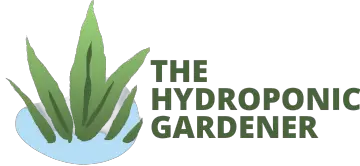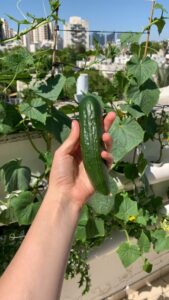Hydroponic gardening is an innovative way of growing produce without soil, using a nutrient-rich water solution instead. By growing plants in nutrient-rich water solutions, their roots directly access the essential elements they need to thrive. This method eliminates the limitations imposed by soil quality, enables year-round cultivation, optimizes resource utilization, and promotes faster growth rates and higher yields.
Whether you’re an aspiring home gardener or an urban farmer seeking sustainable alternatives, understanding the essentials of hydroponic nutrients is paramount for unlocking the full potential of hydroponic gardening and reaping its benefits. Here’s a concise yet comprehensive guide on using hydroponic nutrients effectively.
Nutrient Requirements in Hydroponic Systems
In a hydroponics system, plants receive all their necessary nutrients directly from the water, making it essential to provide the right balance of macro and micronutrients. The most common hydroponic nutrient ratios are based on the N-P-K (Nitrogen-Phosphorus-Potassium) formulation, which are the primary macronutrients required by plants. Secondary macronutrients include calcium, magnesium, and sulfur, while micro nutrients such as iron, manganese, zinc, copper, boron, and molybdenum are also necessary for healthy plant growth. These different nutrients can be absorbed from compounds such as calcium nitrate, potassium sulphate, potassium nitrate, mono potassium phosphate, and magnesium sulphate.
Types of Hydroponic Nutrients
There are two main types of nutrient mixes used in a hydroponic garden. They are:

Liquid nutrients
These are pre-mixed, water-soluble nutrient solutions designed specifically for hydroponic systems. These formulations have all the vitamins, nutrients, and trace minerals a plant needs for growth and come in concentrated form, and are directly added to the water reservoir in the recommended dosage provided by the manufacturer.
Pros
- A liquid solution is to use and apply, making it beginner-friendly.
- Quick absorption by plants, ensuring faster nutrient uptake.
- No need for additional mixing or dissolving, saving time and effort.
- Consistent nutrient composition, reducing the risk of imbalances.
Cons
- Generally more expensive than powdered nutrients.
- Limited shelf life, as they can degrade over time.
- Bulky and heavy to transport and store.
- Potential for separation or settling of nutrients in the bottle, requiring regular shaking before use.

Powdered nutrients
These are dry, granular formulations that must be dissolved in water before use in a hydroponic system. They offer more control over nutrient concentrations and allow custom mixing based on the plants’ needs.
Pros
- Cost-effective compared to liquid nutrients.
- They have a longer shelf life, as they are less prone to degradation.
- Lighter and easier to transport and store.
- Customizable nutrient ratios, allowing for precise control and adjustments.
Cons
- Requires measuring, mixing, and dissolving in water, which can be time-consuming and challenging for beginners.
- Risk of incorrect nutrient concentrations if not mixed accurately.
- Potential for nutrient imbalances if not mixed thoroughly.
- The dry form may be prone to clumping or caking, requiring proper storage and handling.
It’s important to note that both liquid and powdered nutrients can provide adequate nutrition for hydroponic plants. The choice between the two depends on factors such as convenience, cost, customization requirements, and personal preferences.

Selecting Hydroponic Nutrients
The nutrient solution you use in your hydroponic system determines the outcome of your garden. If you give your plants the right nutrient mix, they will thrive, and you will have a bountiful harvest. Here’s a few tips on how to pick the best nutrient solution.
- Understand Plant Nutrient Requirements: Different plants have varying nutrient requirements. Research the specific nutrient needs of the crops you intend to grow hydroponically. Consider factors such as macronutrient ratios (N-P-K), secondary nutrients, and micronutrients required for optimal growth.
- Choose a Reputable Brand: Opt for nutrient solutions from reputable and trusted brands. Look for companies with a track record of producing high-quality hydroponic nutrients. Read reviews and seek recommendations from experienced hydroponic growers or professionals in the field.
- Consider Growth Phases: Plants have different nutrient requirements during different growth phases. Look for nutrient formulations that offer specific solutions for the vegetative (growth) and flowering/fruiting phases. This allows you to provide tailored nutrition based on your plants’ specific needs at each stage.
- Nutrient Concentration and Balance: Assess the nutrient concentration and balance in the formulation. Ensure that the nutrient ratios align with your plants’ requirements. Avoid nutrient solutions that are excessively concentrated, as they can lead to nutrient imbalances or toxicity issues.
- Assess ease of use: Look for nutrients with clear instructions for mixing, application, and maintenance. This will help you manage your hydroponic system more effectively and avoid potential issues caused by incorrect usage.
- Consider organic options: If you prefer an organic approach, look for organic-certified hydroponic nutrients or alternatives like compost tea or worm-casting tea. Be aware that using organic nutrients may require additional filtration and monitoring to prevent clogging or fouling of the system.
- Water Solubility and pH Stability: Check the solubility of the nutrients in water. Ensure that the nutrients dissolve easily and remain stable in the hydroponic system. Additionally, consider the nutrient solution’s pH stability, as maintaining the appropriate pH range is crucial for nutrient absorption.
- Consider Organic vs. Synthetic Options: Decide whether you prefer organic or synthetic nutrients. Organic nutrients are derived from natural sources, while synthetic nutrients are chemically formulated. Organic options may offer a more sustainable and environmentally friendly approach, but synthetic nutrients often provide precise control over nutrient ratios and concentrations.
- Compatibility with Hydroponic Systems: Ensure the selected nutrient formulation is compatible with your specific hydroponic system. Different systems, such as drip irrigation or deep water culture, may have different nutrient delivery requirements. Choose nutrients that can be easily dissolved and delivered through your chosen system.
- Cost and Value for Money: Compare the cost of different nutrient options and consider the value for money they provide. Remember that high-quality nutrients can contribute to healthier plants, better yields, and reduced nutrient deficiencies or imbalances risk. Avoid compromising on quality for the sake of saving costs.
- Follow Manufacturer Instructions: Always follow the manufacturer’s instructions regarding nutrient dosage, mixing ratios, and application frequency. Manufacturers often provide guidelines based on their specific nutrient formulations and the crops they are intended for.
- Seek Advice from Experts: If you’re new to hydroponics or uncertain about nutrient selection, consult with experienced hydroponic growers or experts. They can provide valuable insights and recommendations based on their knowledge and practical experience.
Remember, the nutrient selection process may involve some trial and error to find the optimal solution for your specific plants and hydroponic setup. Regular monitoring and adjustments based on plant response will help you fine-tune your nutrient regimen over time.

Mixing and Administering Hydroponic Nutrient Solutions
Filling the Water Reservoir
Start by filling the water reservoir or hydroponic nutrient solution container with the desired amount of water. Use clean, preferably filtered, water to avoid any contaminants that may impact plant health.
Measuring Nutrients
Consult the manufacturer’s instructions or nutrient schedule to determine the appropriate nutrient dosage for your specific plant species and growth stage. Use a digital scale or measuring instruments to measure the required amount of each nutrient component accurately. Be mindful of units (grams, milliliters, etc.) specified in the instructions.
Mixing Nutrients in Water
Begin by adding the hydroponic nutrient solution to the water reservoir one at a time, following the recommended order of addition as specified by the nutrient manufacturer. Stir or agitate the solution gently as each nutrient is added to ensure thorough mixing. Continue adding and stirring until all the required nutrients are incorporated into the solution. Pay attention to dissolving any powdered nutrients completely.
Checking and Maintaining pH Levels
Measure the pH level of the nutrient solution using a pH meter or pH test strips. The optimal pH range for hydroponics is typically between 5.5 and 6.5, although specific plant preferences may vary.
If the pH level is outside the desired range, add pH adjusters (pH up or down) in small increments. Mix well and recheck the pH until the desired level is achieved. Take care not to overshoot the target pH.
Monitoring and Adjusting Nutrient Levels
Regularly monitor the nutrient levels in your hydroponic system by measuring electrical conductivity (EC) or total dissolved solids (TDS) using a conductivity meter or TDS meter. Compare the measured values with the recommended ranges for your specific plant and growth stage. Adjust nutrient levels by adding more nutrient solution or water to maintain the desired EC/TDS range.
Avoid sudden drastic changes in nutrient concentration, as it can shock the plants. Gradual adjustments are preferred. Remember to log the nutrient concentrations, pH levels, and any adjustments made. Regularly check and adjust the nutrient solution based on plant growth, environmental conditions, and any nutrient deficiencies or excesses observed.
Additionally, always follow the specific instructions provided by the nutrient manufacturer as nutrient mixing ratios and application methods may vary.

Troubleshooting Common Nutrient Mix Mistakes
Here are some troubleshooting tips for common nutrient mix mistakes in hydroponic systems:
Over-fertilization
Overfeeding plants by exceeding the recommended nutrient dosages or applying nutrients too frequently. This can lead to nutrient toxicity, which can stunt plant growth, cause leaf burn, and reduce overall yields.
Solution: Always follow the manufacturer’s instructions for nutrient dosages and application frequencies. Avoid the temptation to add more nutrients than recommended, thinking it will benefit the plants. Monitor your plants for signs of nutrient burn or toxicity and adjust the nutrient concentration accordingly. Flushing the system with plain water can help dilute excess nutrients in severe cases.
pH Imbalances
It is impossible to discuss plant nutrition without considering pH. In hydroponics, we are primarily concerned with the pH of the water used to make up nutrient solutions and irrigate plants. pH is a measure of the relative acidity or hydrogen ion concentration and it plays an important role in plant nutrient availability. Neglecting pH levels results in poor nutrient availability and uptake by plants.
Solution: Test the pH regularly. Use a pH meter or pH test strips to monitor the pH of the nutrient solution. Ensure it falls within the appropriate range for your plants (typically 5.5-6.5). You can also adjust pH levels If pH is too high (alkaline), use a pH-down solution to lower it. If pH is too low (acidic), use a pH-up solution to raise it. Make gradual adjustments and retest until the desired pH range is achieved.
Inadequate Nutrient Solution Monitoring
Failing to monitor nutrient levels regularly leads to nutrient deficiencies or imbalances. These nutrient deficiencies manifest as yellowing leaves, stunted growth, or poor plant health. They can also occur, affecting overall plant performance.
Solution: Regularly monitor your nutrient solution’s electrical conductivity (EC) or total dissolved solids (TDS) using a conductivity or TDS meter. Compare the readings to the recommended ranges for your specific plant and growth stage. Adjust the nutrient levels by adding more nutrient solution or water to maintain the desired EC/TDS range. Monitor plant health and appearance for any signs of nutrient deficiencies or excesses and adjust accordingly.
Incorrect Nutrient Ratios
Using improper nutrient ratios results in unbalanced nutrition for plants.
Solution: Follow the manufacturer’s instructions and ensure you are using the correct nutrient formulation and ratios specified by the manufacturer. Adjust ratios based on plant needs but first research the specific nutrient requirements of your plants and adjust nutrient concentrations to provide balanced nutrition throughout different growth stages. Lastly, keep an eye on plant appearance and growth. Adjust nutrient ratios accordingly if signs of nutrient deficiencies or excesses are observed.
By being mindful of these common nutrient mix mistakes and taking proactive measures to prevent or rectify them, you can ensure that your hydroponic plants receive the optimal nutrition they need for healthy and vigorous growth.
The ideal pH level for most hydroponic systems is between 5.5 and 6.5. However, specific plants may have different pH preferences, so it’s essential to research the optimal pH range for the plants you are growing.
Frequency of changing nutrient solutions
Changing the nutrient solution in your hydroponic system every two to three weeks is recommended to maintain optimal nutrient levels and prevent nutrient imbalances.
When to start nutrients in your hydroponic system
Nutrients should be introduced to your hydroponic system as soon as the plants are placed in it. Start with a half-strength nutrient solution for the first week and gradually increase to full strength as the plants grow and develop.
Alternative nutrient solution for hydroponics
Organic alternatives, such as compost tea or worm casting tea, can be used as nutrient solutions in hydroponic systems. However, they may require additional filtration and monitoring to ensure proper nutrient levels and prevent clogging or fouling of the system.
No, hydroponic nutrients can vary in composition, concentration, and quality. It’s important to choose a reputable brand that caters to the specific needs of your plants and follow the manufacturer’s instructions for proper usage.
What to put in hydroponic water
Besides the essential nutrients, you may need to add pH adjusters, beneficial microbes, or supplements (such as silica, amino acids, or humic acids) to the hydroponic water to improve plant health and growth.
When to add nutrients to hydroponics
Nutrients should be added to the hydroponic system when the plants are first introduced and regularly monitored and adjusted throughout their growth cycle. Replace the nutrient solution every two to three weeks to maintain optimal nutrient levels.
The choice of hydroponic nutrients depends on the type of plants you are growing and their specific nutrient requirements. Research your plants’ needs and choose a reputable brand that offers an appropriate nutrient formulation for your plants.






